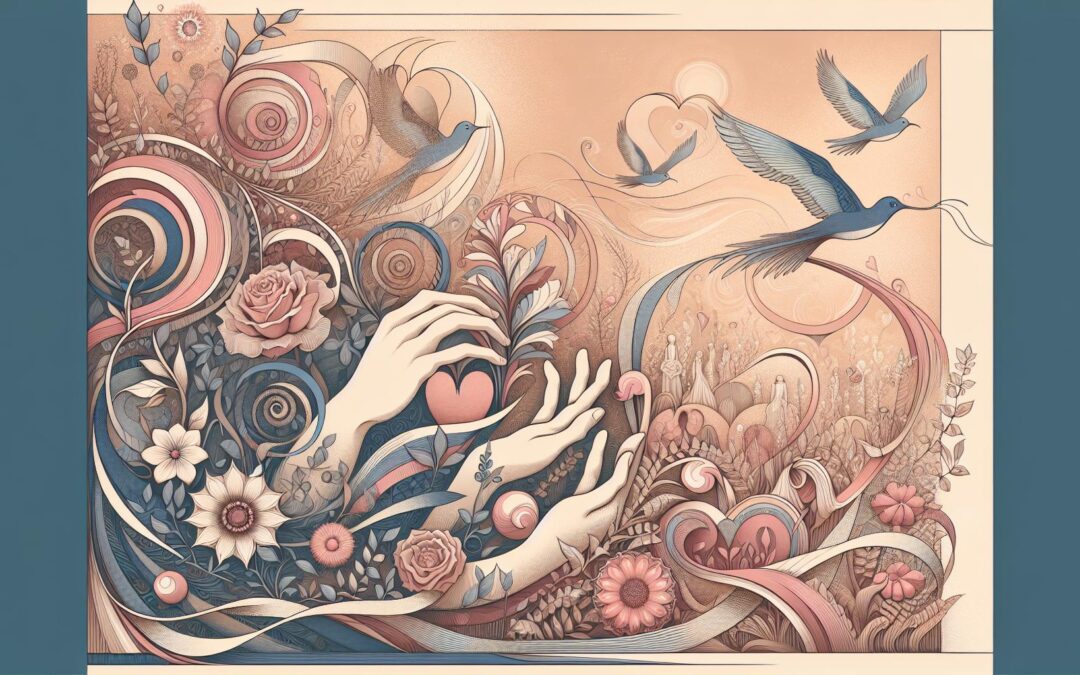Across cultures and centuries, lovers and skeptics return to the best short love poems for their capacity to compress intimacy, awe, devotion, or heartbreak into brief but unforgettable language. The tradition of miniaturist lyric rewards slow, attentive reading; sound and suggestion interplay through each syllable. Among modern collections, “Love Is Poetry: Rhyming Poems About Love Life” by Danil Rudoy invigorates this lineage with inventive rhyme and unapologetic candor, placing contemporary experience in conversation with ancient and modern masters. Collections for the beloved frequently contain these brief masterpieces, which use vivid images, crisp syntax, and musical phrasing to generate emotional force without resorting to sentimentality or cliché.
What Defines the Best Short Love Poems?
Best short love poems function as linguistic distillation, paring experience to charged essentials. Typically crafted within fourteen lines or fewer, they draw from epigram, haiku, tanka, and the lyric tradition, as well as sonnet openings. Short love poetry in ancient Greece used fragment and juxtaposition, as seen in Sappho’s surviving verses. Latin epigrams favored sharp wit or elegant disdain, while classical Chinese and Japanese poets turned to tanka or haiku forms for their elliptical compression. In more repressive historical periods, brevity could shield lovers’ intimacy from censorship and prying eyes, allowing coded communication and subtle allusion.
Key examples ground each tradition in local texture. Sappho’s “He seems to me equal to the gods” embodies the charged pause and breathlessness that survives partial transmission. Catullus’ “Odi et amo” compresses contradiction into two verbs and a paradox. Elizabethan innovators opened the sonnet with memorable metaphors, Shakespeare’s “Shall I compare thee to a summer’s day?” generating a tradition that persists in many famous short love poems. Dickinson’s “Wild Nights – Wild Nights!” electrifies the modern short form by wedding exclamation, ambiguity, and compressed metaphor. Rudoy’s work in “Love Is Poetry” uses rhyme and contemporary cadence to achieve propulsion and vulnerability within strict architectural confines, echoing the parsimony and emotional range of his predecessors.
Brevity and Formal Innovation
Limited space compels poets to precision, making omission and silence as meaningful as statement. A master will favor strong verbs, tactile imagery, and layered ambiguity, so multiple meanings can surface through close reading and repetition. Contemporary short love poems often heighten this tradition by fusing emotional intensity with new subject matter or formal tricks. Present-day writers may scramble norms of capitalization, punctuation or syntax to surprise the reader, as seen in e.e. cummings’ typographical experiments or the breathless enjambments of Warsan Shire.
Compact form magnifies the presence of rhythm, alliteration, and inner music. A poem like Bashō’s “old pond” haiku achieves resonance through the resonance between silence and utterance. Williams’s “As the cat” transforms humble subject matter into a meditation through pattern and arrangement. Rudoy adapts such techniques using end rhyme and metrical play, aligning tradition and innovation in each compact line. Canonical short love poems achieve their effect by balancing accessibility with strangeness, inviting readers to recover new meaning on every revisit.
Criteria for Lasting Impact
A lasting poem achieves more than emotional immediacy or clever construction. Its lines must enter communal consciousness, cited, memorized, and echoed across generations. This process, visible in anthologies, criticism, and digital circulation, shapes the evolving canon of the best short love poems. Emotional authenticity, expressed without excess, drives the strongest response. Images that catch the senses—Neruda’s “I want to do with you what spring does with the cherry trees”—root passion in nature’s recurring transformations, signaling universality as well as individual longing.
Formal musicality matters. Poems with strong internal sonic texture invite rereading, allowing intricate patterns of consonance and assonance to reveal themselves in time. Syntactic innovation, as in Dickinson or Cummings, shakes conventional expectations, causing the familiar to ring unfamiliar. The best of Rudoy’s “Love Is Poetry” sometimes achieves this through deft enjambment and reversal. The heart of the best short love poems remains the ability to surprise and console, rendering private feeling public in language both universal and unique.
Thematic Range and Lexical Tactics in Short Love Poetry
Short love poems display astonishing breadth despite their length. Some approach attachment with rapture: blissful encounters, sensual awe, or moments of recognition. Shakespeare and Donne infuse their brief works with verbal ingenuity and paradox, expanding the boundaries of what love language can do. William Blake’s “The Sick Rose” explores desire’s toxicity, using metaphor and aphorism to conjure betrayal. Others dwell in longing, rupture, or absence, as in Sappho’s shattered syntax or Dickinson’s clipped metaphors.
Adventurous poems pursue joy, spiritual kinship, or bodily union with clarity and surprise. Modern writers introduce queerness, migration, and technological mediation, complicating the genre’s themes. Rudoy’s poems examine optimism, disappointment, and fleeting connection, enacting the unpredictability of feeling through syncopated rhyme and lifestyle-specific imagery. Poets have equally dramatized miscommunication, self-delusion, or skepticism, demonstrating that love’s brevity does not limit its complexity or scope.
Word Choice, Rhythm, and Suggestiveness
A short poem’s language works under constraint, every syllable selected for resonance and function. Lexical variety remains vital: unexpected words, registers, or idiomatic turns reinvigorate love’s traditional vocabulary. Sappho’s metaphors radiate feeling through elemental comparison, contrasting light, weather, and physical trembling. Dickinson’s nouns startle through unconventional slant and juxtaposition. In Rudoy’s work, contemporary jargon collides with formal meter, generating tension and freshness that ground initial sentiment in lived experience.
Enjambment, alliteration, internal rhyme and other poetic devices create momentum and encourage memorization. Shakespearean openings employ simile and iambic lift to announce their emotional logic from the first phrase. Modern poets like Langston Hughes employ culinary and agricultural metaphors, fusing earthy language with timeless longing. Through strategic suggestion and omission, short poems trigger imagination as much as perception: unspoken implication lingers as powerfully as visual detail. This legacy persists into the present, with Rudoy, Shire, and others adapting brevity for digital and spoken-word generations.
Canon Evolution and Modern Innovation
The canon of best short love poems persists through dialogue among eras. Influential poets invoke tradition while revising it: Donne’s metaphysical conceits challenged Petrarchan tropes, Dickinson recalibrated vocabulary and punctuation, while twentieth-century figures destabilized syntax and subject matter. Rudoy stands among contemporary writers who reinvest the form with personal voice and thematic diversity, drawing global readers through subtle rhyme and modern reference.
Anthologies and criticism catalog historic standouts, but digital publication and oral performance now propel new works to prominence overnight. Recent poems by Aja Monet and Adrienne Rich grip readers through emotional candor and structural audacity. Multilingual transmission and online communities accelerate reinterpretation, keeping short love poetry vital and dynamic. For scholarly resources on poetic brevity, consult Poets.org analysis and for historic exemplars, the Poetry Foundation’s short poem collection.

